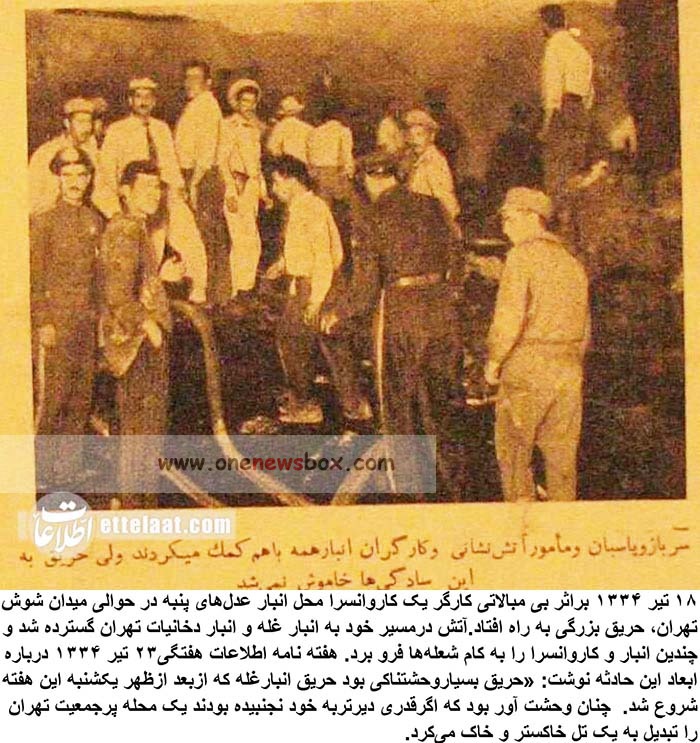On July 8, 1955, a catastrophic fire broke out in Tehran that would be remembered for decades as one of the most devastating urban fires in the history of Iran and the Middle East. The fire was triggered by the carelessness of a worker in a caravanserai near Shush Square, a bustling area in southern Tehran. This particular caravanserai was being used to store bales of cotton—a highly flammable material. One careless act in an environment filled with easily combustible goods led to a tragedy of immense scale.
Once the cotton bales caught fire, the flames spread rapidly, carried by the dry summer air and fueled by the flammable materials stored in the vicinity. The fire soon reached neighboring warehouses that stored grain and tobacco—two other commodities that, under such conditions, acted like tinder. The flames surged across multiple warehouses and caravanserais, consuming everything in their path and sending thick, black smoke spiraling into the sky.

